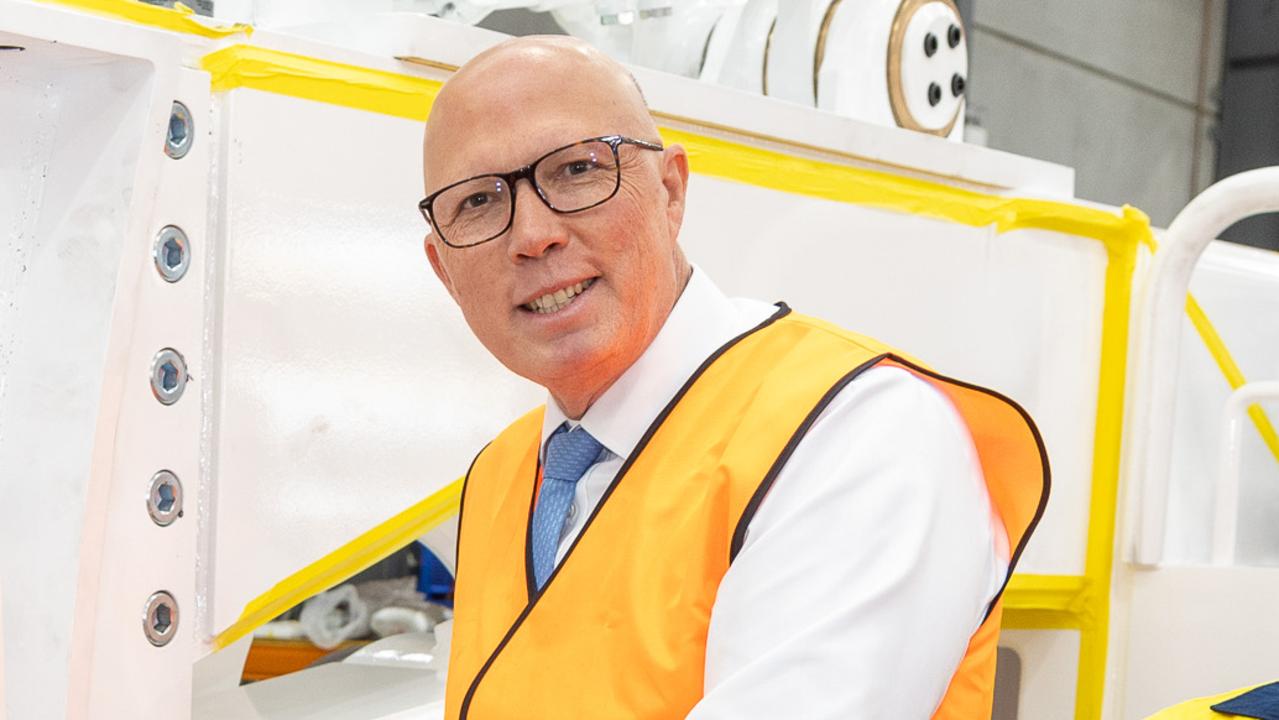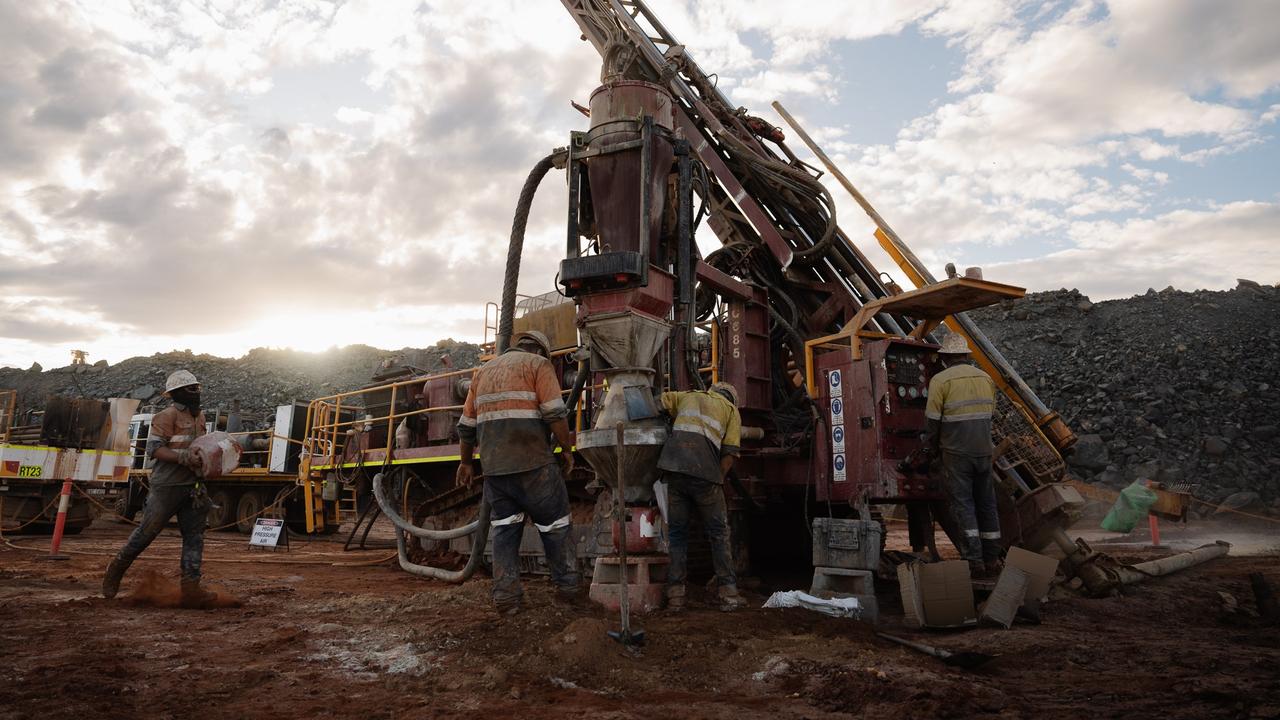Report shows problem with Australia’s forecasts for coal, gas and oil production
Australia has been making a lot of money from a very valuable sector but a new report shows its days may be numbered.
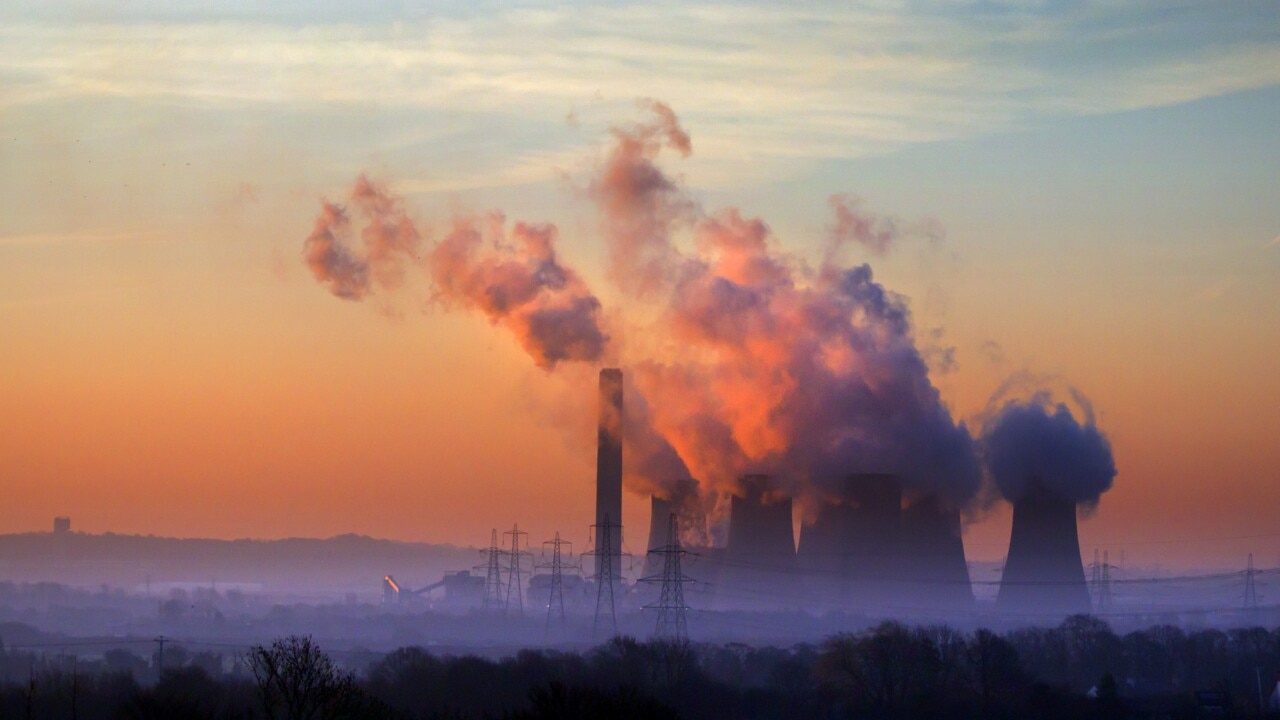
Australia may one day face tobacco-style restrictions on the sale of its coal, gas and oil with a new report providing a warning to countries that rely on the exports of fossil fuels for their wealth.
The 2021 Production Gap Report found the world’s governments still plan to produce more than double the amount of coal, oil and gas in 2030 than would be consistent with limiting global warming to 1.5C.
The situation has been described as “dangerously out of sync” with the Paris Agreement temperature limits.
The report, produced by the United Nations Environment Programme (UNEP) and leading research institutes, focuses on countries that produce the most fossil fuels and whether their future plans are in line with limiting global warming to 1.5C or well below 2C.
Australia, which is the world’s largest coal exporter and the second largest LNG exporter, was shown up for its plans to increase production of fossil fuels, including an increase in coal that will undermine decreases coming from the United States and China.
The Australia Institute climate and energy program director Richie Merzian told news.com.au Australia was probably the only developed country that was looking at massively ramping up all of its fossil fuel production and export.
“What is quite damning in this report, is Australia is a developed country and under the UN framework should be doing more because it’s already industrialised,” Mr Merzian said.
“Yet it is the only one that wants to continue expanding fossil fuel production and to do so for profit.
“Australia is profiting by undermining climate action.”
Australia sends most of the coal, oil and gas it extracts overseas and much like drugs, weapons, tobacco and alcohol, Mr Merzian believes there will be an increasing focus on restrictions to the supply of fossil fuels.
“The report is saying that when it comes to the climate, you can’t just put restrictions on the users, it must also be on suppliers,” Mr Merzian said.
“It’s not just the people who smoke ciggies who pay taxes (on their cigarettes).”
The report shows Australia plans to increase coal production by around 4 per cent between 2019 and 2030. Even more concerning is the plans for gas production, which is expected to increase by 32 per cent, with oil production expected to rise by 12 per cent.
Mr Merzian said the report was also based on quite “conservative” government projections that didn’t include proposals such as the 20 new coal mines planned in New South Wales.
When it comes to coal, the world’s two largest producers China and the United States are planning to drop production by 13 exajoules (EJ) and 4 EJ respectively, between 2020 and 2040.
But this will be partly offset by a small projected increase in Australia as well as increases in India and Russia.
“Global coal, oil, and gas production must start declining immediately and steeply to be consistent with limiting long-term warming to 1.5C,” Stockholm Environment Institute (SEI) scientist and lead author Ploy Achakulwisut said.
“However, governments continue to plan for and support levels of fossil fuel production that are vastly in excess of what we can safely burn.”
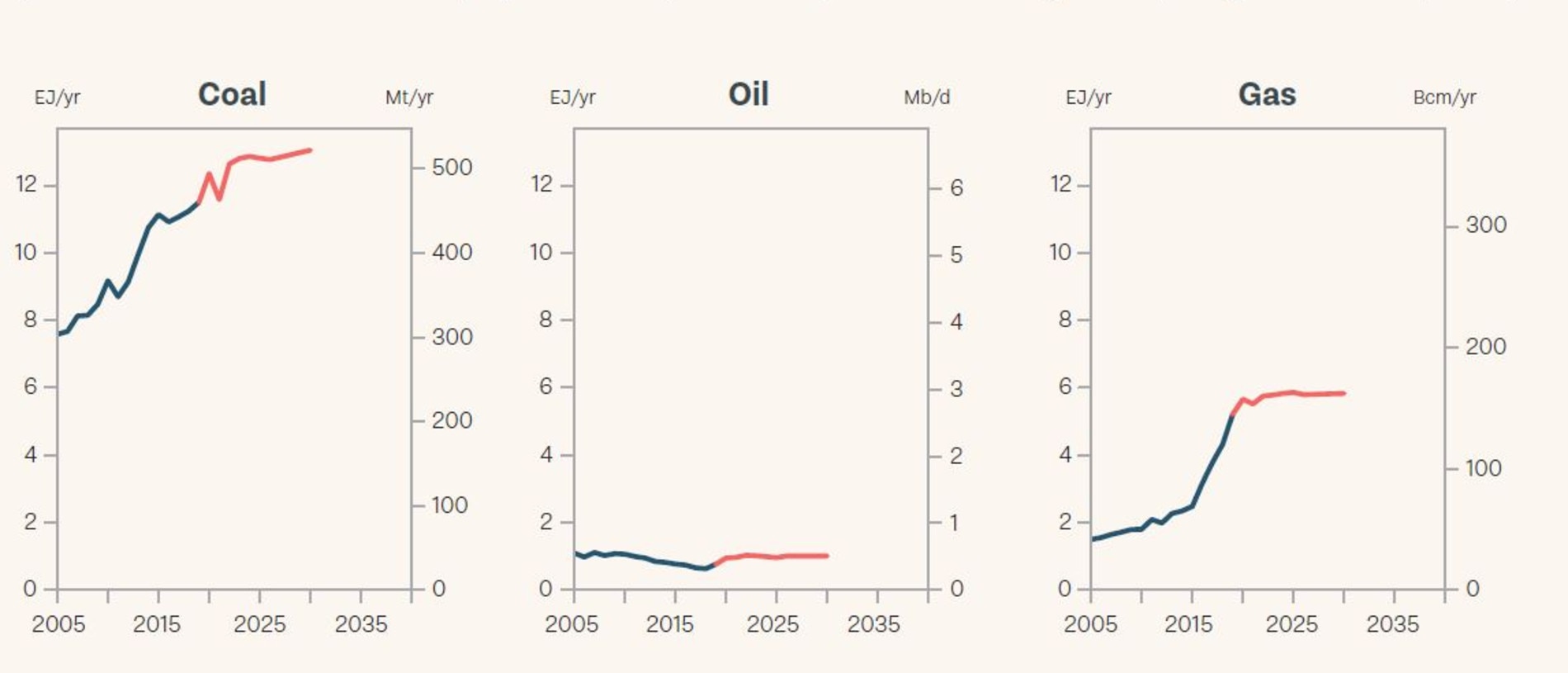

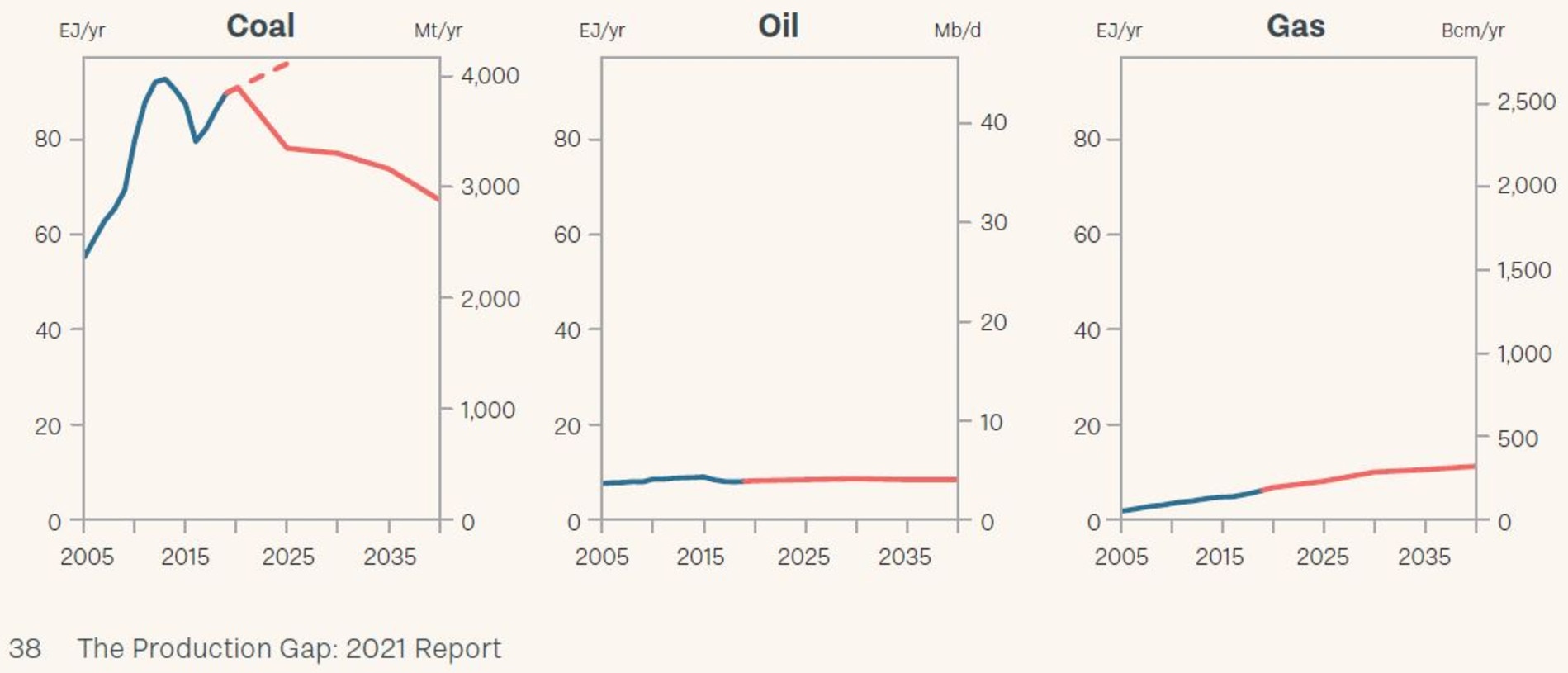
‘It’s like a weapons dealer complaining’
If warming is to be limited to 1.5C, the report said coal production around the world would have to decrease by 11 per cent each year between 2020 and 2040, oil would need to decrease by 4 per cent and gas by 3 per cent.
Instead, over the next 20 years governments are planning to increase the production of oil and gas, with only a modest decrease in coal.
This would see total fossil fuel production increasing until at least 2040.
Mr Merzian said the report showed that ramping up fossil fuel production undermined climate action.
“At the end of the day it’s a fraud to pursue a net zero pathway that somehow also allows for the expansion of fossil fuels,” he said.
“Gas is not a transition fuel, it’s a fossil fuel and it’s part of the problem.”
Mr Merzian said every country needed to look at what it could do to increase its efforts.
“Australia is trying to stick to the same weak target that it put forward six years ago while at the same time profiting from selling more fossil fuels, including to China,” he said.
“It’s like a weapons dealer complaining about the number of gun holders on his street.”
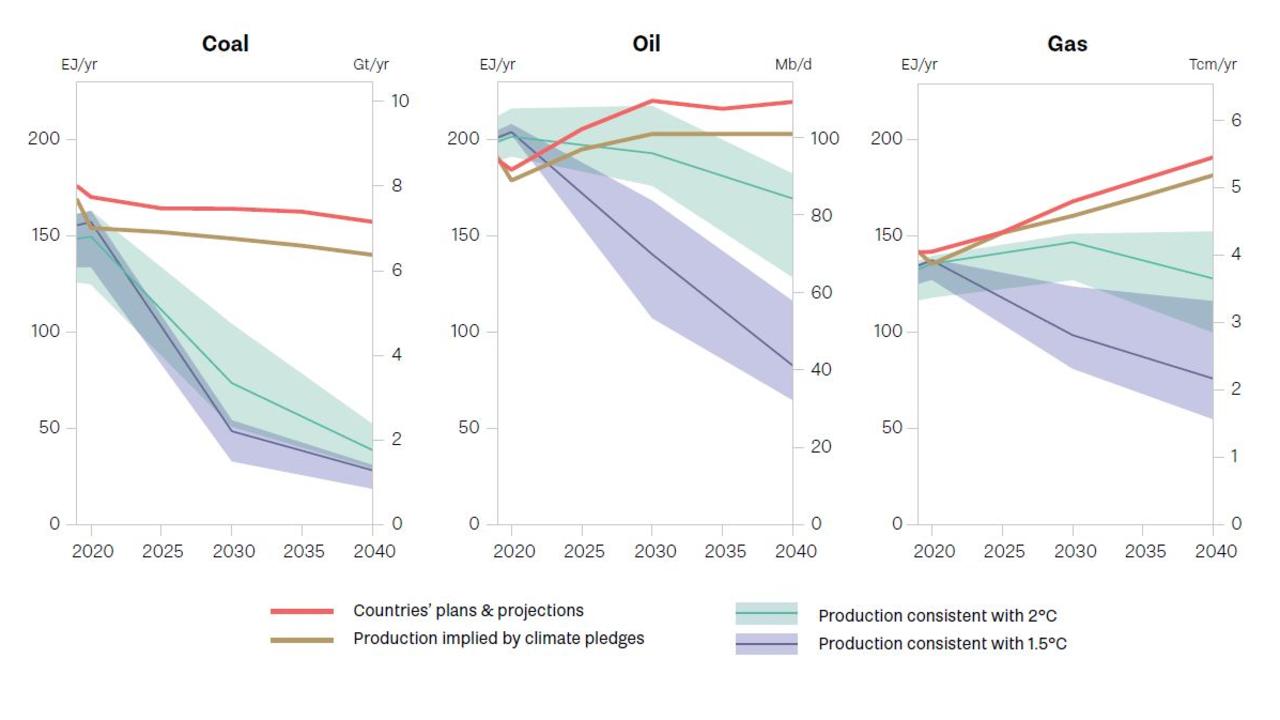
Australia still supporting fossil fuel industry
The report highlighted continuing government support in Australia for fossil fuels including schemes that allow oil and gas producers to pay little or nothing in royalties or resource rent taxes.
“Australia (also) exempts fuel used in mining from fuel taxes through the fuel tax credit system (although this is also available to other sectors),” the report said.
Approvals for large coal mines have enjoyed expedited approvals in Queensland and royalty payments have also been deferred.
It’s been estimated that between $1.6 billion and $1.7 billion in finance to fossil fuel projects between mid-2009 and mid-2020 has been provided through Export Finance Australia. This includes $300 million for a LNG facility and coal expert terminal.
There were no government policies identified for a managed wind-down of fossil fuel production, with policies supporting a just and equitable transition away from fossil fuel production limited to transition assistance at a local level, for example for the coal plant closure in the Latrobe Valley and some possible options to handle closures in the Hunter Valley.
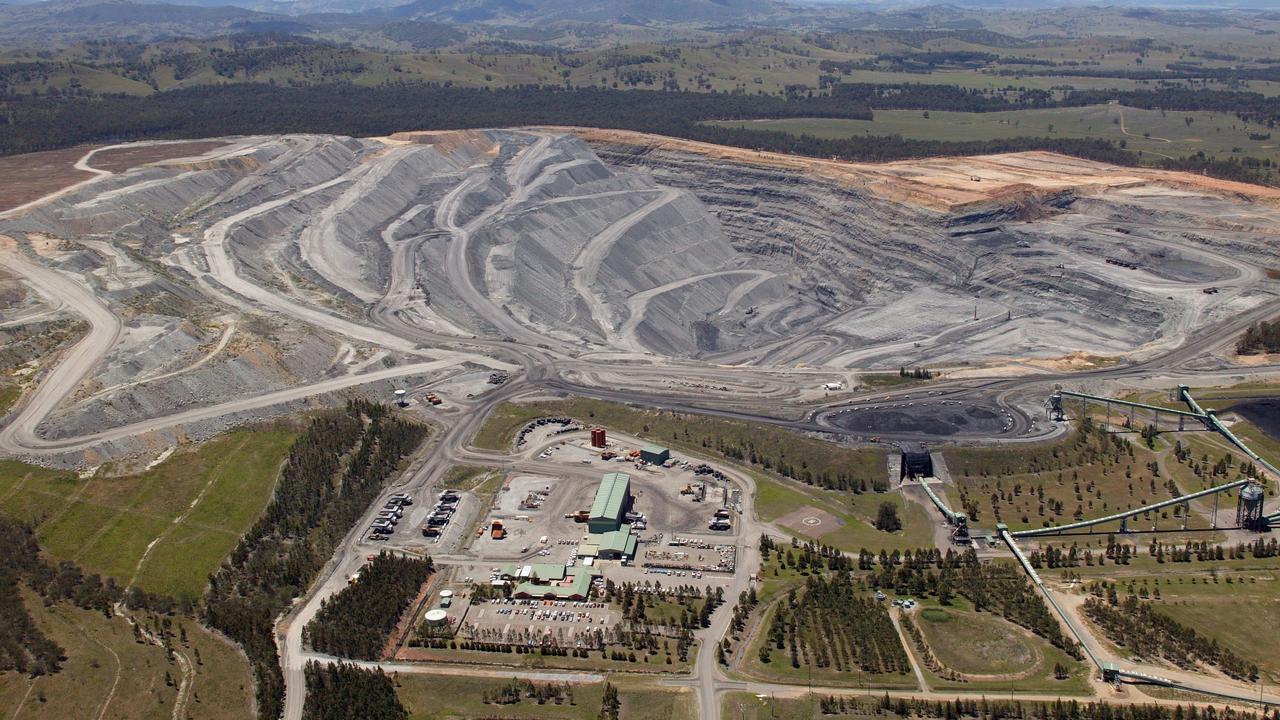
Nations must recognise their responsibility
Across the world, governments are planning to produce 110 per cent more fossil fuels in 2030 than would be consistent with limiting global warming to 1.5C, and 45 per cent more than would be consistent with limiting warming to 2C.
Current plans would lead to 120 per cent more coal, 14 per cent more oil, and 15 per cent more gas in 2030.
The production gap is widest for coal in 2030. Around the world, production plans and projections would lead to around 240 per cent more coal, 57 per cent more oil, and 71 per cent more gas than would be consistent with limiting global warming to 1.5C.
The report said that few countries that produce fossil fuels have assessed publicly whether their projected production is compatible with limiting warming to 1.5C or well below 2C.
“Achieving net zero emissions globally will require countries to wind down their production of coal, oil and gas,” the report said.
SEI executive director Måns Nilsson said fossil fuel producing nations ”must recognise their role and responsibility in closing the production gap and steering us towards a safe climate future”.
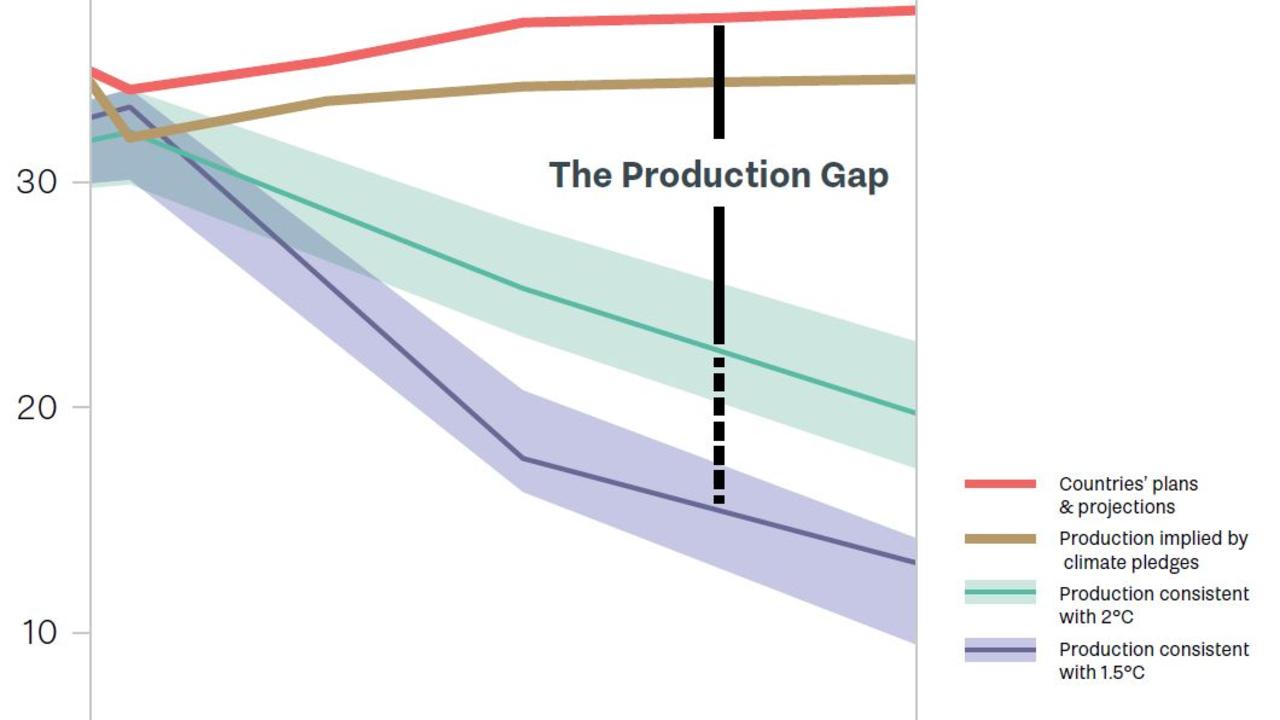
Despite the announcement of new emissions reduction targets in many countries, the situation when it comes to fossil fuel production has not changed much since the last report in 2019, which shows governments are not acting quickly to change their plans when it comes to the supply of polluting fuels.
More Coverage
UNEP executive director Inger Andersen said the devastating impacts of climate change were here for everyone to see.
“There is still time to limit long-term warming to 1.5C, but this window of opportunity is rapidly closing,” she said.
“At COP26 and beyond, the world’s governments must step up, taking rapid and immediate steps to close the fossil fuel production gap and ensure a just and equitable transition. This is what climate ambition looks like.”



